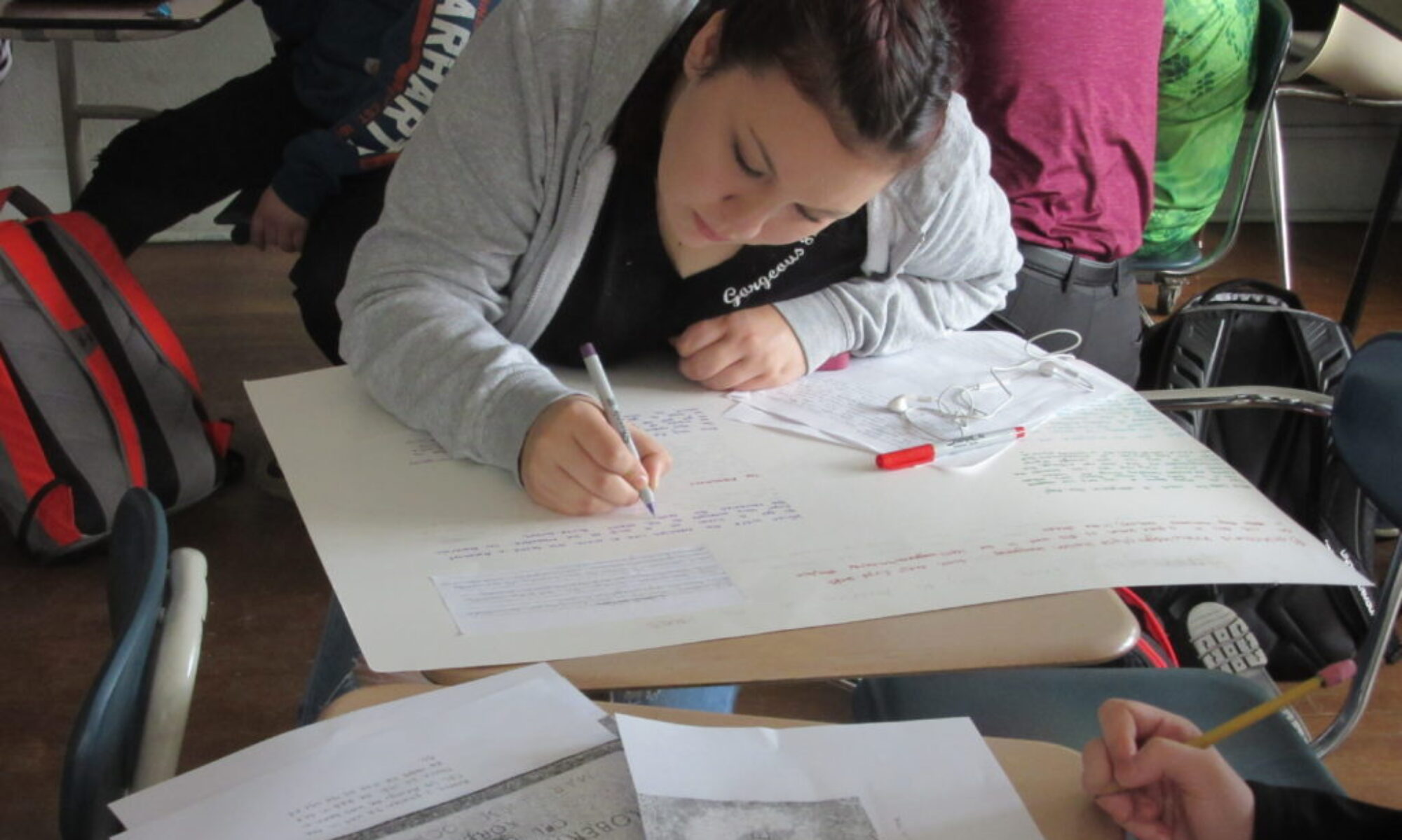Battle Physics hosts first multi-school tournament
That is just what Allan Garvin and Becky Bushey did to raise the stakes of their annual Battle Physics competition. After four years of engaging students in the designing, building, calibrating, and competing of projectile launchers, they invited other schools to join the learning and the fun.

Wait… what is battle physics again?
At Green Mountain Middle High School, students collaborate across grade levels to build projectile launchers. Becky’s seventh graders work with Allan’s high school physics students to apply math to physics concepts. The student teams design their launcher using the following steps:
- Identify the problem
- Research potential solutions
- Develop solutions
- Select a solution based on cost, availability of materials, and time
- Present a design to a committee of experts
- Revise and construct
- Test including calculations; initial velocity, angle of projection, distance
- Redesign
Once they’ve built their launchers, competition begins. It’s hands-on, collaborative, and high stakes!
Enter Dorset, and Leland and Gray
Science teachers from two Southern Vermont schools were intrigued. Heather McGann teaches science to students in grades 6-8 at The Dorset School. For her, this project was a great fit for the engineering and physics proficiencies she teaches to 8th graders. Rose Scavotto has been working on more project-based learning units with her 7th and 8th-grade students at Leland and Gray. Battle Physics seemed like a way to engage her students in hands-on learning while hitting some key science proficiencies and transferable skills.
Nevermind the physics… it’s all about the collaboration!
Allan and Becky shared their plans and documents with Rose and Heather. The four teachers met to get to know one another, create a timeline for the project, and bounce ideas off of one another. And then they got to work!
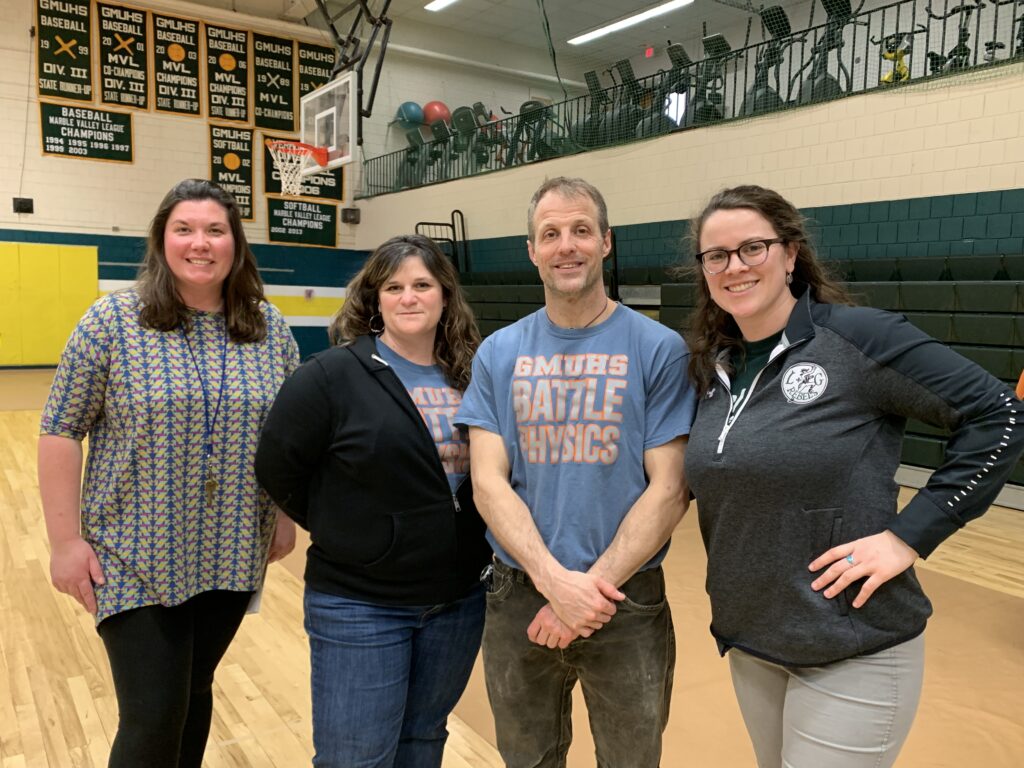
One size does not fit all
It became clear during their planning that each school would implement the project to meet the needs of their own students. Heather’s learners are all eighth-graders, and her focus was on the engineering process. She also wanted students to focus on two transferable skills: self-direction and creative and practical problem-solving. She designed her plans and instruction accordingly.
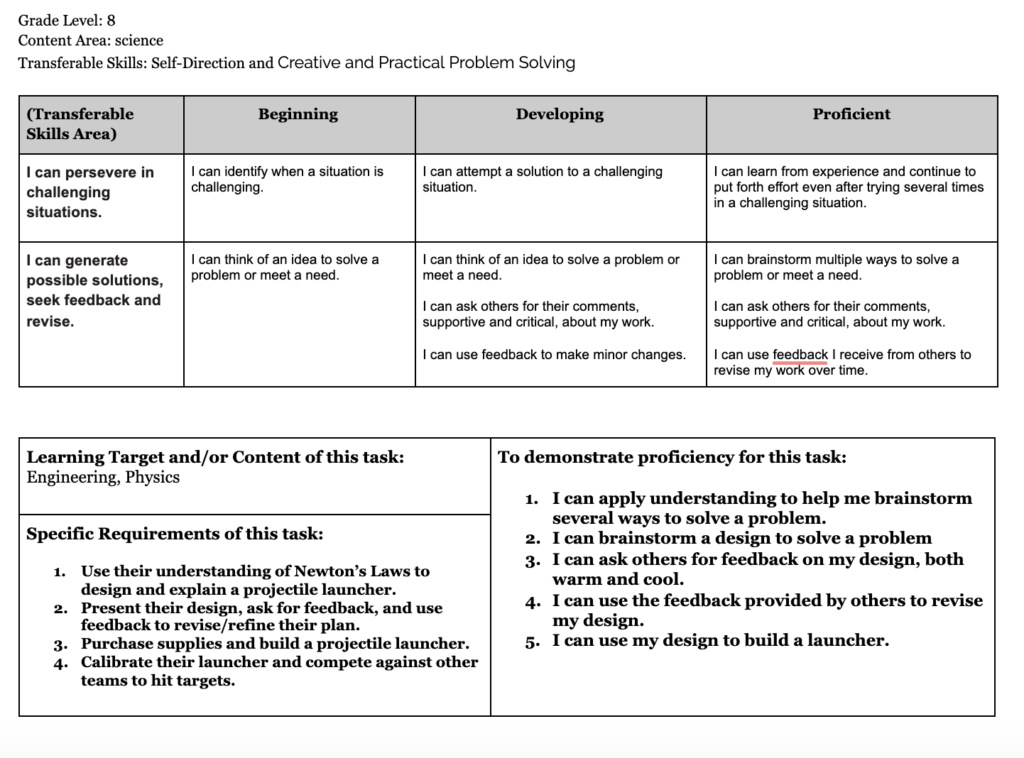
Rose’s science students work in a multi-grade context. Seventh and eighth graders would be collaborating to design, build and calibrate their projectile launchers. They would also be working on transferable skills: clear and effective communication and persisting in solving challenging problems. Rose’s instruction was designed to meet her particular learners’ needs while guiding them towards mastery in content proficiencies.
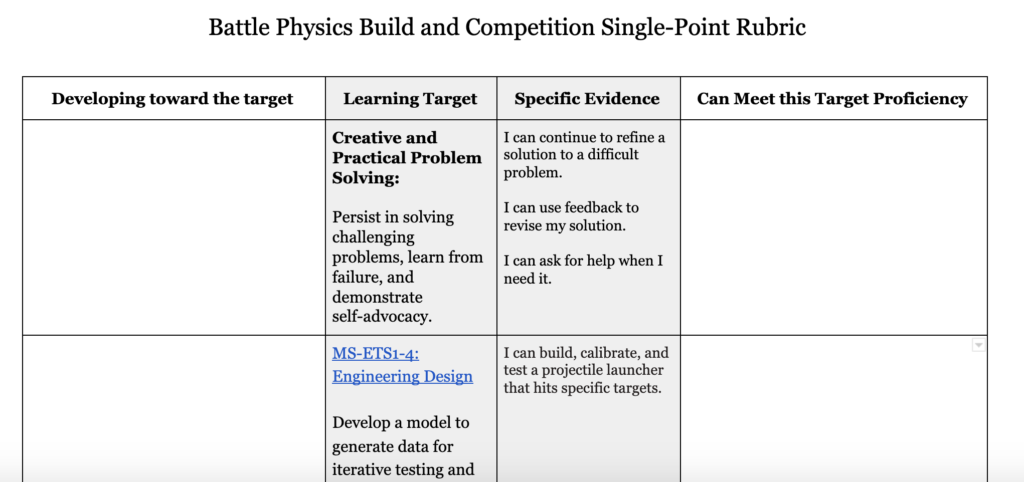
Finding common ground
While instruction and expectations differed, all three schools shared some common guidelines:
- In teams, students developed prototypes of projectile launchers.
- Teams requested feedback from community members to refine their final design.
- Each team had a budget of $50 for materials to build their projectile launcher. (Green Mountain teachers have budgeted for this project. The Dorset School and Leland and Gray each applied for grants to fund this project.*)
- Teams were given the same number of targets to hit within a given range, and the rules were clear.
We have our first functioning projectile launcher! Time to #calibrate #battlephysics #projectbasedlearning @JPhillipsVT @bob_thibault @VtedScience @VTEducation pic.twitter.com/k8VNI7rRo6
— Rose Scavotto (@ScavottoScience) February 9, 2019
And the teachers worked together to create a final competition so all students could shine!
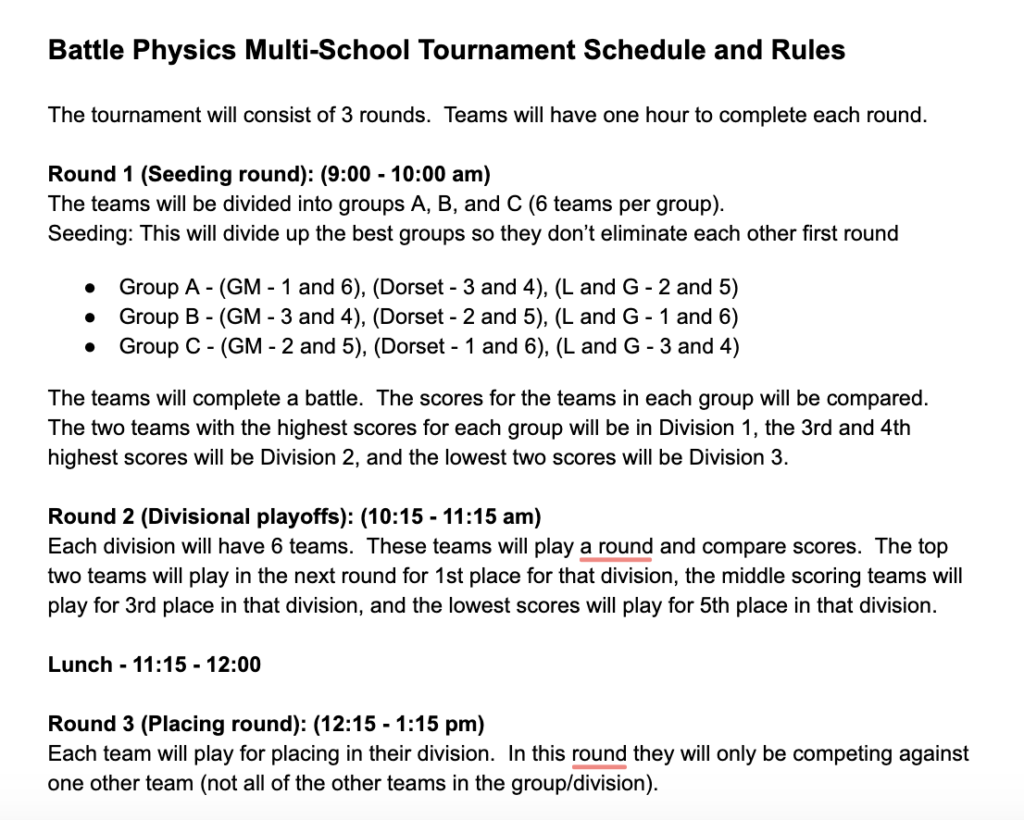
Higher stakes and engagement for the win!
https://twitter.com/JPhillipsVT/status/1105109202509488128
When the final tournament day arrived, teams were pumped! Competitors worked hard to calibrate their launchers, set up targets, and do the math! Trigonometry is NOT standard issue middle school math, so Green Mountain provided some high school math helpers for the middle school-only teams. Calculations complete, they launched their projectiles and hoped for a hit.
In between rounds, students mingled with competitors from other schools, checked out the wide variety of launcher designs, and reflected on how they might improve their own designs. This hands-on learning inspired teachers, participants, and spectators alike.
Projectile launchers will never not be fun, but they aren’t the real driving force here. The cross-school competition raised the stakes and elevated the experience for all learners. It was a day filled with emotion: nervous energy, excitement, the thrill of hitting a target, the disappointment of a near miss, and the joy of a shared experience. Consequently, the event and the learning will be more memorable, and isn’t that what we really want?
Your turn: would you like to enter a team in next year’s Battle Physics tournament?
*Full disclosure: the granting agency mentioned in this story is our organization, The Tarrant Institute. We fund innovative school change projects to qualifying schools around Vermont.
